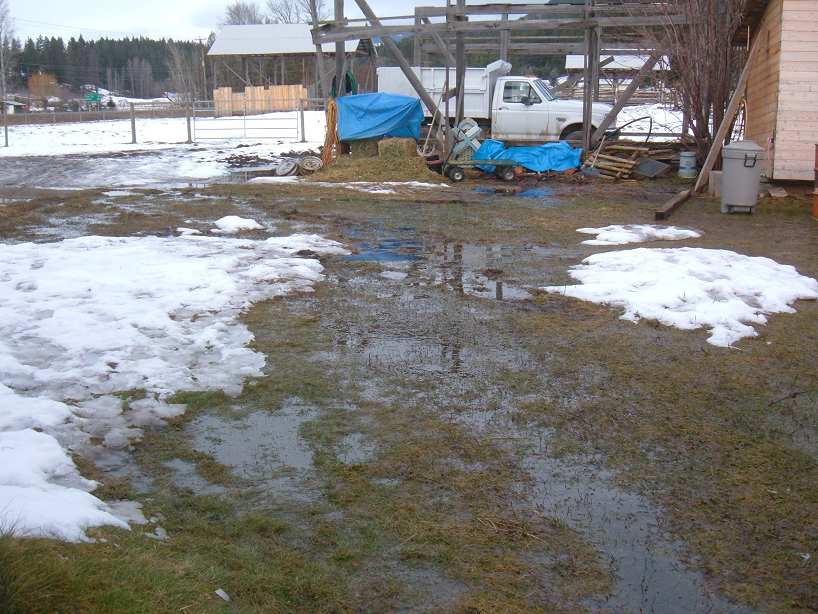
This Place Is Really A Swamp. Except For...

My next door neighbor. The original owner of my property. In the words of her late husband. Describes the property as a 'cedar swamp'. That's apparently what it was when it was purchased somewhere around 1918. I think. After much hard work. Mostly done by hand and with horses. The cedar trees were removed. Some of which were so big that the stumps had to be blasted out with dynamite.
After the land had been cleared it needed to be drained. What was done was to cut trenches, from the top of the property, to the ditch at the highway at the lower end (elevation) of the property. The trenches were then filled with clay 'drain-tiles'. The same clay tile used for a 'Mexican roof' only the tiles are round and hollow. Just like a pipe. These tiles are only one foot long ranging from about 3 inches to 6 inches in diameter (id). On this property alone we have discovered four lines that traverse the entire distance (top-to-bottom) which is about 600-700 feet. Each. In addition we have found maybe five other lines that travel at diagonals. We're not really sure what is up with those lines. My freshman experience, And I'm sure thats they were when this was done, is that there was trouble with a tile line and the diagonals were cut to alleviate the problem. Only later to discover that the problem is always due to the line becoming clogged. Roots usually grass, silt, collapse (tile failure), etc...
The 'panic' theory arises from the fact that every tile line on the property originates at an artesian spring. AKA. Water percolating from the ground. They are not placed randomly. They are designed to drain the back of the property to the front of the property leaving the property, the middle part, dry and fully irrigated. An absolute thing of beauty. Anyway... Every time we have had a problem with 'swamping' it has been because a tile line has plugged. Usually roots like I said. So what we do is to dig a hole ahead of the swamp. Very important. If you dig a hole before (upstream) the plug then it will fill with water even before you have hit the tile line. It takes a little bit of assessment and a little bit of feel (hydraulic engineering) to chose the right place to dig. Only because digging is hard on people and hard on pastures. Therefor we like to minimize digging.
For those of you that didn't do the math... We figure there is between one and two miles of drain tiles on this property. All one foot long and all set by hand. Wow... That's a lot of work. And surprisingly enough when we dig a line up to repair it. The tiles look almost brand new. And they are at least 80 years old.
Trouble or not. I like this system. With proper maintenance it would last 10,000 years. Don't believe me. Check this out...
Here's a little bit of reference...
This is what happens when you dig upstream (ahead of the plug). Note: This hole filled with water in less then 30-seconds. Arguably: Immediately.
This is what it looked like downstream. In theory, that water shouldn't be there. Repair is deceiving that way because after the problem has been corrected sometimes the residual surface water, which is now draining again, makes it look like there is still a problem. With the drainage line repaired 'all' the excess water should be in the tile. Not around it.
This is where patience pays off. Instead of panicing... Observe. Here is a line after one week of being repaired. Ultimately, we had to dig six holes, about 30 feet apart, rent a hand operated sewer snake, and during the onslaught of winter clean over 200 feet of neglected line. By hand. Some of which we might have been responsible for. Sigh! Observe now that the surrounding ground is essentially dry. And trust me there is plenty of water flowing in the tile line.
When we have the extra time and or resources we like to put in a clean-out system. To make this less of a burden in the future. Sadly this convenience will 'not' outlast the life of the original system. In case you are wondering... One is for upstream, the other, downstream. That covers 300 feet with a 150 foot snake.